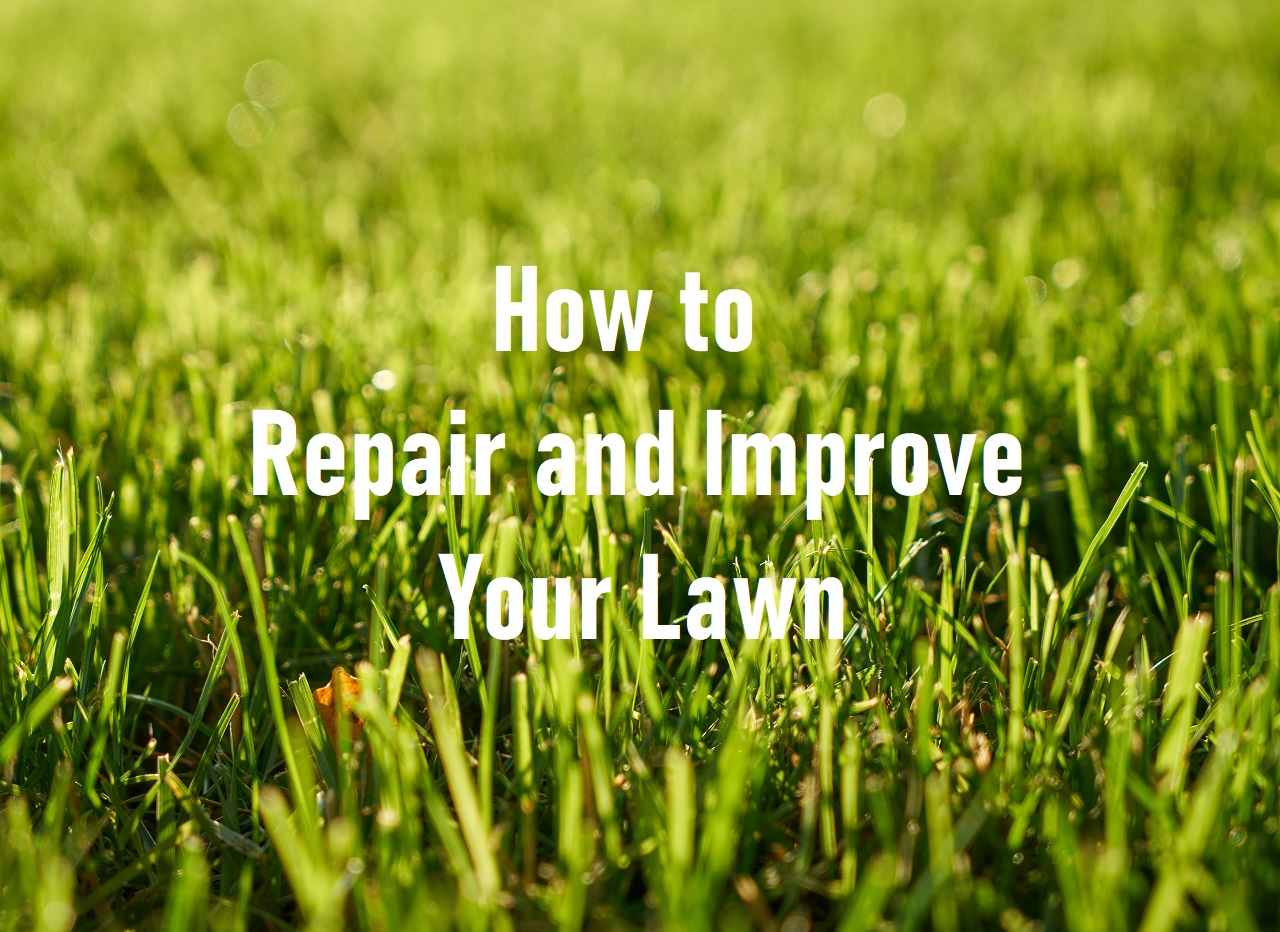A lush green lawn is the pride of any homeowner, but maintaining a healthy lawn can be challenging. From bare patches to weeds, there are many issues that can plague even the most well-tended lawn. Fortunately, with the right knowledge and tools, anyone can repair and improve their lawn.
One of the first steps in repairing a lawn is to identify the problem. Is the lawn suffering from bare patches or weeds? Is it being mowed too short or too infrequently? Once the problem has been identified, homeowners can take steps to address it. This may include patching bare spots, aerating the lawn, and using the right fertilizer and irrigation methods.
By following a few simple steps, homeowners can enjoy a beautiful, healthy lawn. With the right tools and techniques, anyone can repair and improve their lawn, no matter how daunting the task may seem. Whether you are dealing with bare patches, weeds, or other issues, there are solutions available to help you achieve the lush, green lawn of your dreams.
Page Contents
Understanding Your Lawn
Before diving into the steps to repair and improve your lawn, it’s important to understand a few key aspects of your lawn. First and foremost, the type of grass you have will determine how you care for it. There are two main categories of grass: cool-season grasses and warm-season grasses.
Cool-season grasses, such as bluegrass, perennial ryegrass, and tall fescue, thrive in cooler temperatures and are typically found in the northern regions of the United States. Warm-season grasses, such as zoysia, prefer warmer temperatures and are commonly found in the southern regions of the United States.
Another important factor to consider is the overall health of your lawn. A lush green lawn is not only aesthetically pleasing, but it also provides numerous benefits such as reducing soil erosion and improving air quality. To achieve a healthy lawn, proper maintenance is key. This includes regular mowing, watering, and fertilizing.
It’s also important to note that different areas of your lawn may have different needs. For example, areas with heavy foot traffic may require more frequent aeration to prevent soil compaction. Additionally, areas with excessive shade may require different types of grass or alternative solutions such as planting shade-tolerant ground covers.
By understanding the type of grass you have, the overall health of your lawn, and the specific needs of different areas, you can better care for and improve your lawn. In the next section, we’ll dive into the steps to repair and improve your lawn.
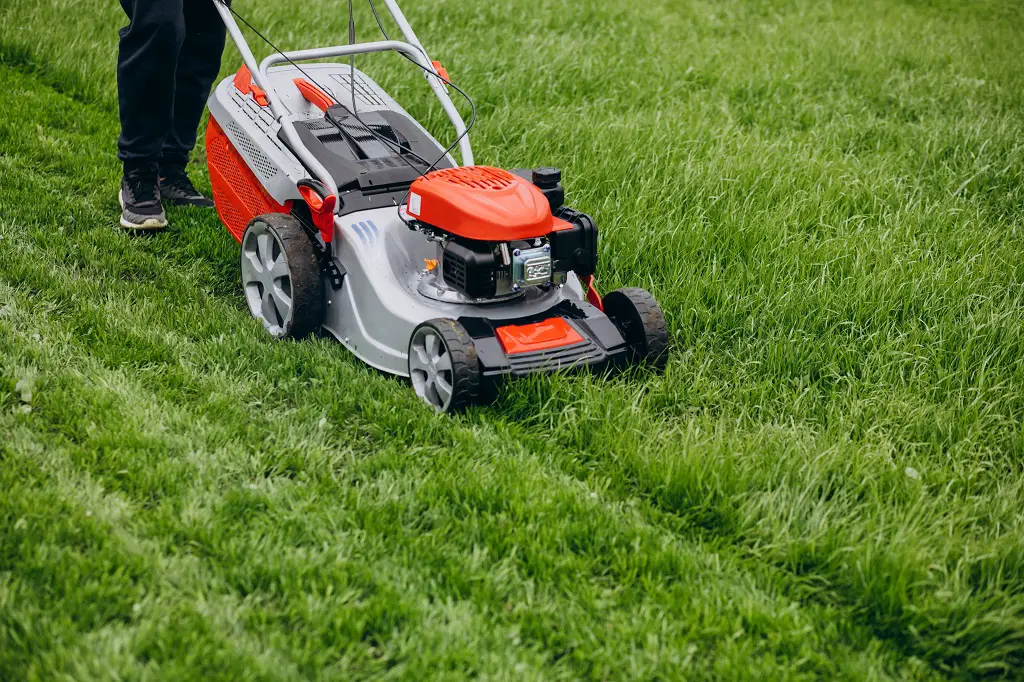
Assessing Lawn Health
Assessing the health of a lawn is the first step towards repairing and improving it. A healthy lawn is characterized by its lush green color, uniformity, and thickness. On the other hand, a lawn that is patchy, dying, or has dead grass indicates that there are underlying problems that need to be addressed.
One of the most important factors to consider when assessing lawn health is the soil. Compacted soil can prevent roots from growing and absorbing nutrients, leading to a patchy and unhealthy lawn. A soil test can help determine the pH level, nutrient content, and the presence of any harmful pollutants or chemicals that may be affecting the lawn’s health.
Another factor to consider is the amount of sunlight and shade the lawn receives. Grass needs sunlight to grow and thrive, and too much shade can lead to thinning and patchiness. Additionally, excessive foot traffic can also damage the lawn, leading to soil compaction, erosion, and dead grass.
Insects and grubs can also damage a lawn, causing brown patches and dead grass. Polluted air and water can also negatively impact lawn health, leading to thinning and discoloration.
To improve lawn health, it’s important to address any underlying issues. For example, compacted soil can be improved by aerating the soil and adding soil additives such as organic matter or compost to improve soil structure. Clay soils may need additional organic material to improve drainage and aeration.
In summary, assessing lawn health is an important step towards repairing and improving a lawn. By considering factors such as soil health, sunlight, foot traffic, and pests, homeowners can identify underlying issues and take steps to improve their lawn’s health.
Lawn Care Basics
Maintaining a healthy and lush lawn requires a combination of proper watering, mowing, fertilizing, and seeding. Here are some basic lawn care tips to help you keep your lawn looking its best:
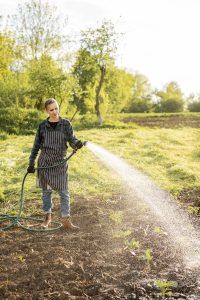
Watering
Water is essential for the growth and health of your lawn. It is important to water deeply and infrequently, rather than shallowly and frequently. This encourages the roots to grow deeper into the soil, making them more resistant to drought and disease.
To determine how much water your lawn needs, place a rain gauge or empty tuna can on your lawn while watering. Once it fills up with water, you will know how long it takes to water one inch deep. Most lawns require about one inch of water per week, either from rainfall or irrigation.
Mowing
Mowing is an important part of lawn maintenance. It not only keeps your lawn looking neat and tidy, but it also helps to promote healthy growth. It is best to mow your lawn when the grass is dry and at a height of about three inches. This helps to shade the soil and prevent weed growth.
Make sure your lawn mower blades are sharp, as dull blades can tear the grass and leave it vulnerable to disease. Also, vary your mowing pattern each time you mow to prevent soil compaction and encourage upright growth.
Fertilizing
Fertilizing your lawn provides the nutrients it needs to grow healthy and strong. There are many types of fertilizers available, including organic and synthetic options. It is important to follow the manufacturer’s instructions when applying fertilizer, as too much can burn the grass and cause damage.
In general, it is best to fertilize your lawn in the spring and fall, when the grass is actively growing. This helps to promote healthy root growth and prepares the grass for the upcoming seasons.
Seeding
Seeding is an important part of lawn care, especially if you have bare spots or thin areas. There are two main methods of seeding: overseeding and spot seeding. Overseeding involves spreading seed over the entire lawn to thicken it up, while spot seeding is used to fill in bare spots.
When seeding, it is important to choose the right type of grass seed for your climate and soil type. It is also important to prepare the soil properly by removing any debris and loosening the top layer of soil. This helps to promote good seed-to-soil contact and ensure proper germination.
Sod
Sod is a great option if you want an instant lawn. It is essentially a layer of grass that has been grown on a special soil mixture and is held together by a layer of mesh or netting. Sod is easy to install and can be used to create a new lawn or patch bare spots.
When installing sod, it is important to prepare the soil properly by removing any debris and loosening the top layer of soil. This helps to promote good root growth and ensure that the sod establishes properly. It is also important to water the sod regularly to keep it moist and encourage root growth.
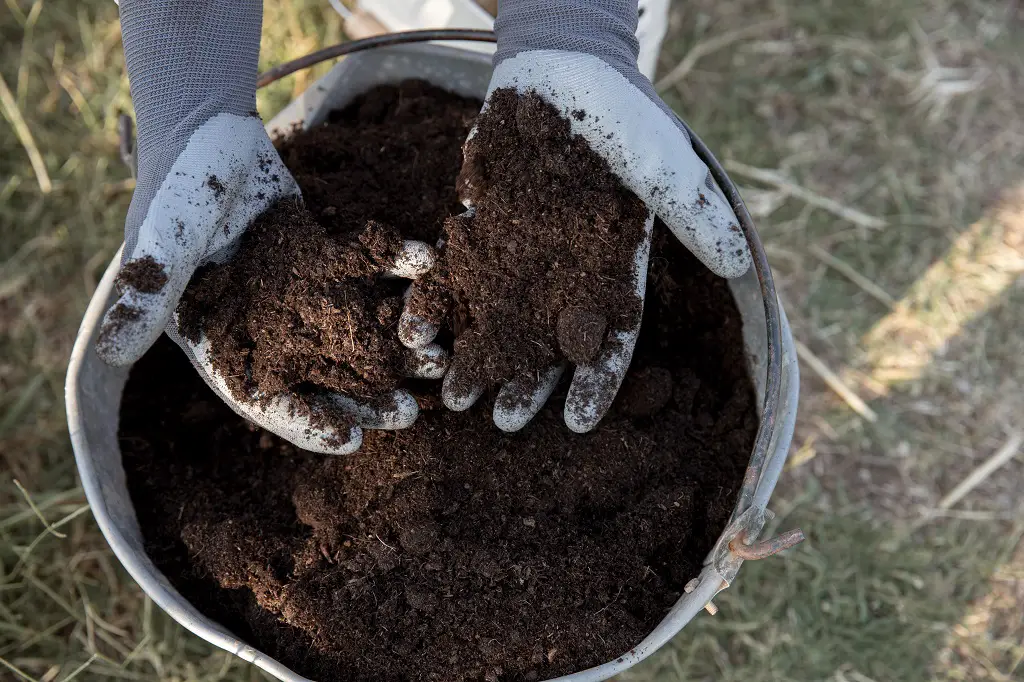
Advanced Lawn Care Techniques
For those looking to take their lawn care to the next level, there are several advanced techniques that can help improve the health and appearance of their lawn.
Aeration
One of the most important techniques is aeration. Aeration involves perforating the soil with small holes to allow air, water, and nutrients to penetrate the grass roots. This process helps to alleviate soil compaction, which can prevent grass from growing properly. There are two main types of aerators: core aerators and spike aerators. Core aerators remove small plugs of soil from the lawn, while spike aerators simply poke holes in the soil. Core aerators are generally considered more effective, as they create more space for air and water to penetrate the soil.
Power Raking
Another technique that can help improve the health of a lawn is power raking. Power raking, also known as dethatching, involves removing the layer of dead grass and other organic material that can build up on top of the soil. This layer, known as thatch, can prevent water and nutrients from reaching the grass roots. Power raking can be done with a specialized machine called a power rake, which uses rotating tines to remove the thatch. Alternatively, a lawn mower with a bag attachment can be used to collect grass clippings and other organic material.
Mulching and Composting
Mulching and composting are two techniques that can help improve the soil quality of a lawn. Mulching involves leaving grass clippings on the lawn after mowing, which can help to add nutrients back into the soil. Composting involves collecting organic material such as grass clippings, leaves, and food scraps, and allowing it to decompose into a nutrient-rich soil amendment. This compost can then be spread on the lawn to help improve soil quality.
Topdressing and Reseeding
Topdressing and reseeding are two techniques that can help improve the appearance of a lawn. Topdressing involves spreading a thin layer of compost or topsoil over the lawn, which can help to even out the surface and improve soil quality. Reseeding involves planting new grass seed in areas of the lawn that are thin or bare. It is important to choose the right type of grass seed for the region and to follow proper planting techniques to ensure successful growth.
By incorporating these advanced lawn care techniques, homeowners can help to improve the health and appearance of their lawn.
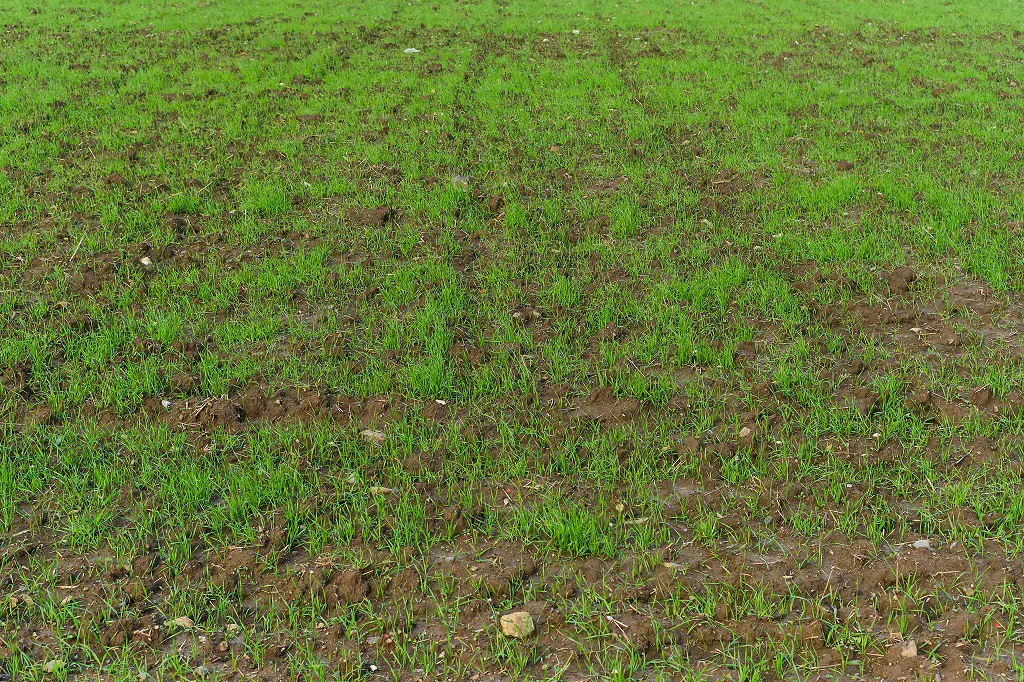
Repairing and Improving Your Lawn
Repairing and improving your lawn can be a simple process that involves patching, aerating, dethatching, and practicing proper mowing and irrigation methods. First, assess the condition of your lawn to determine the best approach. If your lawn has more than half of it covered in weeds and bare patches, it may be best to start from scratch.
One option is to use a non-selective herbicide to kill all vegetation. Be sure to read and follow all directions on the label to avoid damaging nearby non-target plants or harming wildlife. After the herbicide has done its job, remove the dead grass and weeds and then till the soil to prepare for seeding.
Seeding is a great option for repairing patches in your lawn. Use a variety of grasses appropriate for your region or one that corresponds to the surrounding grass if possible. Spread the seed thickly in the lawn repair area and cover it with a light sprinkling of topsoil or a thin layer of compost. Water the area regularly to keep it moist until the new grass has established.
Another option is to use plugs to repair your lawn. Plugs are small sections of grass that can be planted in bare areas. This method can be more expensive than seeding, but it can also be more effective in producing a lush, even lawn. Plugs can be purchased at a landscaping supply store or rented from a rental center.
Spring is the best time to repair and improve your lawn. The soil is still moist from the winter snow and the temperatures are mild. Before seeding or planting plugs, be sure to remove any dead grass or thatch using a rake or dethatching machine. After planting, cover the area with straw to protect the new grass from the sun and wind.
Improving your lawn doesn’t have to break the bank. Consider using chicken manure, slow-release fertilizer, gypsum, and winterizer fertilizer to provide nutrients to your lawn. These products can be purchased at a landscaping supply store or online.
In conclusion, repairing and improving your lawn can be a simple process that involves proper lawn care, lawn repair, and landscaping techniques. By following these tips and methods, you can achieve a lush, even lawn that will be the envy of your neighbors.
Understanding and Dealing With Lawn Problems
Maintaining a healthy and lush green lawn is not always easy. Lawn problems can arise due to various reasons, including lack of proper care, environmental factors, and pests. Some of the common lawn problems and their solutions are discussed below.
Bare Spots and Patchy Grass
Bare spots and patchy grass can occur due to various reasons, such as foot traffic, pet urine, disease, and insect damage. The first step in fixing these issues is to identify the underlying cause and address it. For example, if the bare spots are due to pet urine, then consider training the pet to use a designated area for urination. Once the underlying issue is addressed, the bare spots can be fixed by reseeding the area or laying new sod.
Weeds
Weeds can quickly take over a lawn if not dealt with promptly. The best way to prevent weeds is to maintain a healthy lawn. This can be achieved by proper mowing, fertilization, and watering. In case of an existing weed problem, consider using a selective herbicide that targets the specific type of weed without harming the grass.
Dead Grass and Dying Lawn
Dead grass and a dying lawn can be a result of various factors, such as lack of water, poor soil quality, and disease. The first step in fixing these issues is to identify the underlying cause and address it. For example, if the lawn is not getting enough water, then consider adjusting the irrigation system or watering more frequently. Additionally, consider aerating the soil and applying fertilizer to promote healthy grass growth.
Insects and Grubs
Insects and grubs can cause significant damage to a lawn if not dealt with promptly. The first step in preventing insect damage is to maintain a healthy lawn. Additionally, consider using insecticides or nematodes to control the population of harmful insects and grubs.
Thatch and Compaction
Thatch is a layer of dead grass and other organic matter that accumulates on the surface of the soil. Excessive thatch can prevent water and nutrients from reaching the roots of the grass. Compaction occurs when the soil becomes too dense, making it difficult for the grass roots to penetrate and absorb water and nutrients. Consider aerating the soil to alleviate compaction and removing excess thatch to promote healthy grass growth.
Erosion and Pollution
Erosion and pollution can cause significant damage to a lawn. Consider planting native grasses and plants that are adapted to the local environment to prevent erosion. Additionally, avoid using harmful chemicals and fertilizers that can pollute the soil and water.
Bacteria
Bacteria can cause various lawn diseases, such as brown patch and dollar spot. The best way to prevent lawn diseases is to maintain a healthy lawn. Additionally, consider using fungicides to control the population of harmful bacteria.
By understanding the common lawn problems and their solutions, homeowners can maintain a healthy and lush green lawn. 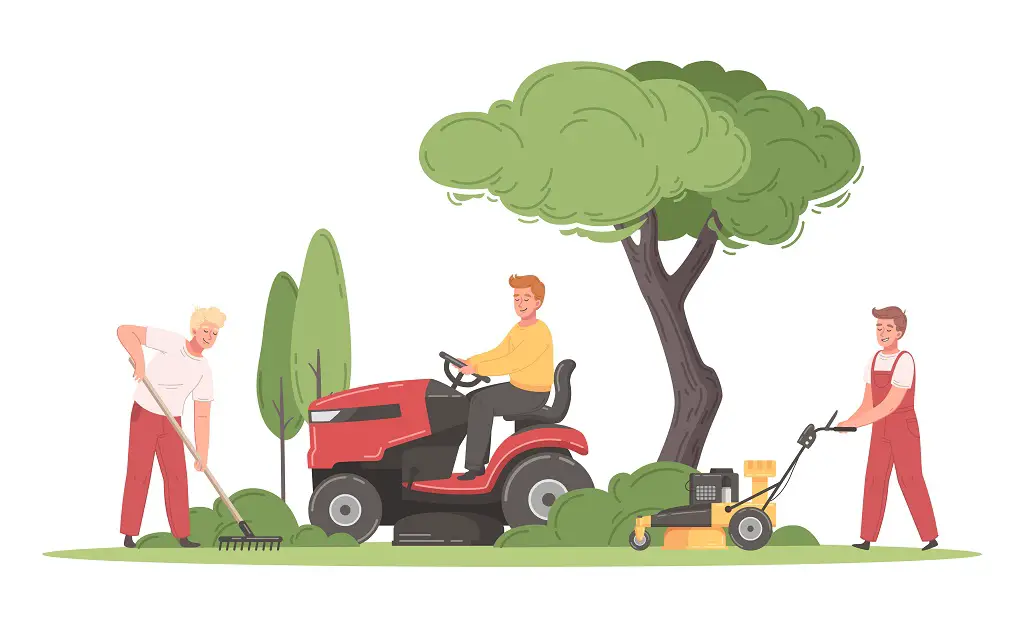
Choosing the Right Tools and Materials
When it comes to repairing and improving your lawn, choosing the right tools and materials is crucial. Having the right equipment and supplies can make the process easier and more effective. Here are some of the tools and materials you may need:
- Lawn Mower: A good lawn mower is essential for maintaining a healthy lawn. There are various types of lawn mowers available, including push mowers, self-propelled mowers, and riding mowers. Choose a mower that is appropriate for the size of your lawn.
- Sprinkler: Proper watering is essential for a healthy lawn. A sprinkler system can help ensure that your lawn receives the right amount of water. There are various types of sprinklers available, including oscillating sprinklers, impact sprinklers, and rotary sprinklers.
- Aerator: An aerator is a tool that removes small plugs of soil from your lawn, allowing air, water, and nutrients to reach the roots. There are various types of aerators available, including manual and power aerators.
- Power Rake: A power rake is a tool that removes thatch from your lawn. Thatch is a layer of dead grass and other organic material that can prevent water and nutrients from reaching the roots. Removing thatch can help promote a healthier lawn.
- Fertilizer: Fertilizer provides essential nutrients to your lawn, helping it grow strong and healthy. There are various types of fertilizers available, including granular and liquid fertilizers.
- Herbicide: Herbicides can be used to control weeds in your lawn. There are various types of herbicides available, including selective and non-selective herbicides.
- Seed/Grass Seed: If you have bare patches in your lawn, you may need to seed or reseed those areas. There are various types of grass seed available, including cool-season and warm-season grasses.
- Sod: If you need to quickly establish a new lawn, sod may be the best option. Sod is pre-grown grass that can be rolled out and installed on your lawn.
- Mulch/Compost/Topsoil: Adding organic matter to your lawn can help improve soil health and promote healthy grass growth. Mulch, compost, and topsoil can all be used to add organic matter to your lawn.
- Plugs: Plugs are small pieces of grass and soil that can be used to fill in bare spots in your lawn. Plugs can help establish new grass growth in those areas.
- Straw: Straw can be used to cover newly seeded areas, helping to retain moisture and protect the seed from birds and other animals.
By choosing the right tools and materials for your lawn repair and improvement project, you can ensure that your lawn stays healthy and beautiful for years to come.
Frequently Asked Questions
What is the best grass patch repair?
The best grass patch repair method depends on the size of the patch. For small patches, homeowners can use grass seed or sod. For larger patches, a combination of soil, seed, and fertilizer may be necessary. It is important to match the grass seed to the existing lawn and to follow proper watering and maintenance procedures.
How do you fix a badly damaged lawn?
Fixing a badly damaged lawn requires more work than a simple patch repair. Homeowners should start by removing any dead grass, weeds, and debris. They should then aerate the soil, add topsoil, and reseed or resod the lawn. It is important to water and fertilize the lawn properly to promote healthy growth.
How do you restore a badly neglected lawn?
Restoring a badly neglected lawn may require more time and effort than fixing a damaged lawn. Homeowners should start by removing any weeds, dead grass, and debris. They should then aerate the soil, add topsoil, and reseed or resod the lawn. It may also be necessary to use a weed killer to remove any remaining weeds. Proper watering and fertilization are essential for restoring a neglected lawn.
How do I make my grass look good again?
To make grass look good again, homeowners should start by mowing the lawn to an appropriate height and removing any clippings or debris. They should then water and fertilize the lawn properly and address any bare spots or damaged areas. Regular maintenance, including mowing, watering, and fertilizing, is essential for keeping grass healthy and looking its best.
How do I fix bare spots in my lawn?
To fix bare spots in a lawn, homeowners should start by removing any dead grass and debris. They should then loosen the soil with a rake or hoe and add topsoil if necessary. Grass seed or sod can then be added to the bare spot, and the area should be watered and fertilized properly.
When is the best time to repair lawn with seed?
The best time to repair a lawn with seed is during the fall or spring when temperatures are mild and there is adequate moisture. Fall is generally the best time to plant cool-season grasses, while spring is the best time to plant warm-season grasses. It is important to follow proper watering and maintenance procedures to ensure successful seed germination.
